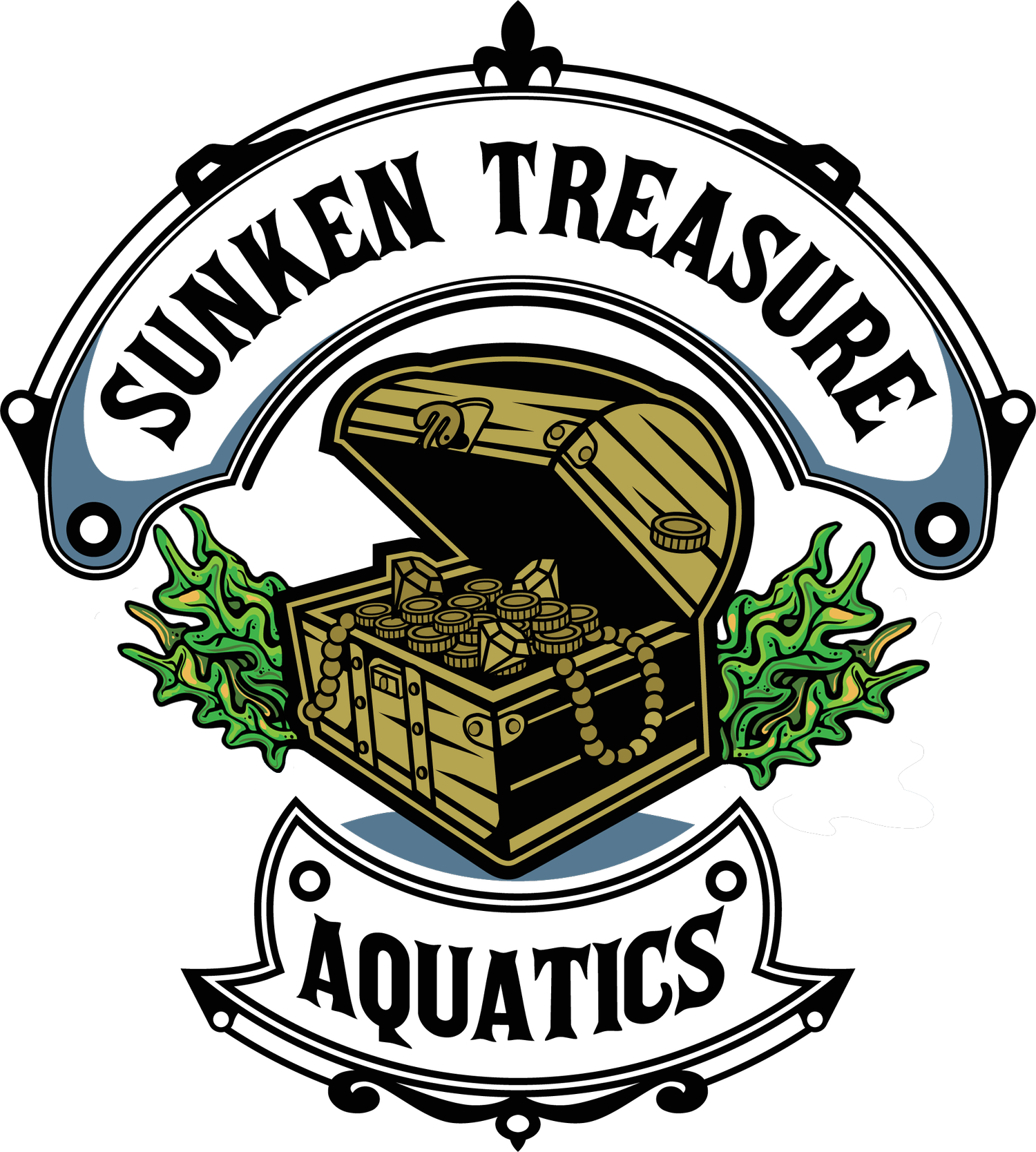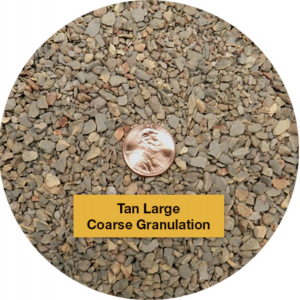The Ultimate (cheap) Planted Tank Substrate - Safe T Sorb
Safe T Sorb! That’s what we’re using as the ultimate, cheap planted tank substrate. Let’s check it out and see how to use it for an amazing planted tank.
Let’s start with the most important element: Price. I bought a 33lb bag of Safe T Sorb from my local Tractor Supply for $8. You may also be able to find it at local hardware stores, auto parts stores, or landscape supply stores.
For comparison, a bag of UNS Controsoil, a high quality planted substrate, costs $55 for a 20lb bag!
Safe T Sorb is a material made of montmorillonite clay, and it is manufactured for absorbing pretty much any chemical or substance such as oil, grease, car fluids, etc. Think of it as kitty litter but for dangerous chemicals. We’re going to use this amazing absorbency to our advantage, and use the Safe T Sorb to absorb stuff we want rather than bad stuff like oils. This material is 100% aquarium safe as it is just clay, and it comes with lots of amazing benefits. The material is a very high CEC material, which means it is very strongly negatively charged and can bind to many positively charged ions. Simplified, this means that if you add a bunch of fertilizer to the water, this substrate will actually absorb the fertilizer and hold it so that the plants can gather the nutrients through their roots. Most plants (excluding floaters and epiphytes) collect the vast majority of their nutrients through their roots in the substrate, so the more nutrients in the substrate the better.
As another nice benefit, this stuff looks shockingly nice, it looks like a fine gravel with a unique texture and looks really nice in most tanks. It is rather lightweight and dusty, however, so prepare to add a little more substrate than usual to ensure plants stay anchored, and prepare to rinse and rinse this stuff before adding to your tank.
Writer’s Note: Scroll to the bottom for my 1-year update. I highly recommend mixing Safe-T-Sorb with cheap fine gravel or fine lava rock to keep it from compacting in the future.
Safe T Sorb has a shockingly nice texture!
Charging Up Your Substrate
In the wise words of Billy Mays, the secret is in the absorbent technology, that makes this stuff more absorbent than almost any other options. Before adding to a fish tank, we’re going to charge this substrate up to “load” it with lots of nutrients and fertilizers. You can also load it up with Ammonium (positively charged) which is extremely beneficial for high tech plants. Here’s what we do:
First, lets get the substrate ready to charge. I added however much I need to a bucket and rinsed the substrate just by sitting it under the bathtub faucet and stirring it until the water ran clear. You can also just add it straight to your tank and be ready to clean your filter a few times. Before charging, I drained all the water except for around 2-3 inches above the layer of the substrate.
First, we need to stop it from sucking the kH out of the water. This stuff is super absorbent, so it’ll pull the kH right out of your water which will leave your pH unstable. To remedy this, we’ll add tons of baking soda for it to absorb. A user on the Planted Tank subreddit recommended adding 2lbs of baking soda for the whole 33lb bag. I also mixed in some crushed coral to the substrate, which releases kH to the water and will ideally help balance the chemistry. When using this setup, I highly recommend waiting a few weeks after tank setup to let your pH and kH stabilize before adding fish. Adding the baking soda yields a fun reaction that winds up making the water look like an evil witch’s brew too!
If you’re using this substrate for an extremely softwater tank, such as a tank meant to grow difficult plant species or caridina shrimp, you can add much less baking soda or skip this step entirely. Just keep a close eye on your pH.
Loading Up The Ferts
A good planted substrate needs a good mixture of fertilizers. It is important that you have some nitrogen, some phosphorus, as well as micronutrients like iron, magnesium, potassium, etc.
Luckily for us, rather than needing to purchase or dose loads of expensive fertilizers, plenty of products already exist that give us exactly those nutrients: Root Tablets! Root Tabs are specially formulated to have all the best nutrients for plant roots, so I just added lots of root tabs to my charge water. I wound up adding a handful of Osmocote root tablets as well as Seachem Flourish tablets. I put them in a bowl of water and microwaved it for a few minutes to boiling to help them dissolve faster, then poured that in and mixed it in. I also mixed in some potash plant fertilizer, a few good squirts of micronutrients such as iron, and whatever other good fertilizers I could find around.
Many high quality plant substrates are rich in ammonia to promote growth through plant roots. Since ammonia itself is NH3 it won’t bind to this substrate well, but ammonium - NH4+, is perfect. Conveniently, this is exactly what any ammonia detoxifier converts ammonia to, so you can very easily create some ammonium for your substrate to absorb by simply adding ammonia to the water then adding a detoxifier such as API AMMO-LOCK or Seachem Prime. I literally just tossed in a frozen shrimp overnight to let it rot and decompose then added detoxifier after to allow it to be absorbed. I originally had ordered some Ammonium Chloride, but I realized that since Chloride is negatively charged, it was fully bound to the Ammonium and wouldn’t allow the substrate to bind to it. Because of this, I highly recommend either dosing pure ammonia plus a detoxifier or simply adding something to rot to spike the ammonia.
A quick and important note regarding ammonia - Obviously, ammonia is bad for fish. As mentioned before, it is highly recommended that you give your tank a few days to equilibrate before adding any fish. Anything left over in the substrate with high ammonia concentration can hurt your fish if it isn’t cycled out.
Once we’ve added all this, we can confidently check all the boxes needed for a perfect planted tank substrate:
Ammonia / Nitrogen Rich which heavily promotes plant growth
Contains all micro and macronutrients needed for growth
Small grain gravel that doesn’t compact or break down, perfect for rooting and preventing rotting
Buffering substrate that will help lower pH (But not too much, because of the baking soda / crushed coral we added)
Looks nice, flat, easy to vacuum and clean, which is also safe for bottom dwellers and able to be pushed around by fish
Absorbs nutrients added to the water, allowing the substrate to hold nutrients for far longer than most aquasoils
I recommend letting the substrate charge for as long as possible, I’ve seen some people say up to a week or longer. Frankly, I’m impatient, so for this project I’ve let it charge overnight and I’ll be adding it to my plants-only tank shortly and just heavily dosing fertilizers.
Adding it to our tank
The first and most important step before adding this substrate to a tank (or before adding anything else) is to clean this stuff. We have added a LOT of junk that will absolutely nuke your tank with algae if you don’t clean it. Luckily, most of the stuff we added should be dissolved by now, or floating.
Once again, my favorite cleaning method is the ol Bucket in a Bathtub method. I just place the bucket under the faucet and turn it on cold full blast, letting the water overflow until it is nice and clean. I stir it with a big wooden spoon every 15 minutes or so (please don’t use your hand, it hurts, trust me). Once the water seems clean after stirring, it should be good to go. Be patient, because it may take a while. If you’ve kept this in your tank, I recommend just filling the tank halfway, stirring up the substrate, draining it, and repeating until it’s clean.
After we’ve cleaned the substrate, we should be left with a pretty substrate charged with nutrients and ready to make our plants happy. If you’d like to mix it with anything else, now’s the best time to do it. I had some extra old Controsoil sitting around so I mixed a bit of that in just for good measure, and I mixed a bit of small gravel in just to mix up the texture as well.
As mentioned before, after adding to the tank and filling the tank, I highly recommend giving the tank a few days to equilibrate. This stuff can alter the water chemistry by a good bit, so you should wait until those alterations are complete and stable so your water isn’t constantly changing around your fish.
Hopefully this helps and yields a good explanation of how to use a super cheap, effective substrate for your planted tanks!
One Year Update
Wow, I wrote this article almost an entire year ago. Since writing this article, I set up my fish room and used Safe-T-Sorb as substrate for about 20 high tech planted tanks. I charged it all in a giant barrel that smelled awful and almost became a single man after my wife got sick of smelling fish poop in the house from charging the substrate.
Here’s what I’ve learned!
Safe-T-Sorb is still a great substrate, but it encountered a few issues. I noticed it broke down and solidified, especially when mixed with fine sand. I would personally recommend mixing it with a fine gravel or fine lava rock to keep the substrate aerated and keep it from compacting.
There still seems to be nutrients in my substrate since Safe-T-Sorb is a high CEC substrate, meaning it absorbs fertilizers from the water.
Interestingly, the tanks that had Safe-T-Sorb seemed more prone to growing algae. I’m thinking it’s because it slowly releases nutrients from the water.
The baking soda to prevent it from adjusting the pH seemed to work great. None of the tanks using Safe-T-Sorb have had any issues with pH or hardness and they seem identical to other tanks using inert substrate.
The use of Trumpet Snails to aerate the substrate has been incredibly beneficial, and the tanks that have lots of trumpet snails seem to have noticeably better plant growth than the ones that don’t. We also sell trumpet snails now!
What would I do differently?
I’d strongly advise mixing Safe-T-Sorb about 4:1 with a small, inert gravel. I personally found that mixing in small lava rocks worked perfectly.
When charging Safe-T-Sorb, for the love of god do not try to save money and charge it with plant fertilizer from Walmart that smells like highly concentrated monkey ass. Just sacrifice a bit of liquid fertilizer or get some powdered fertilizers if you need a lot.
Unless mixing in bulk, I really think it was easier just mixing and charging the Safe-T-Sorb IN the tank. I’d just add however much I needed, add a bunch of baking soda and fertilizer, fill the tank and stir it, and do a bunch of water changes a few days later and I was done. No buckets or mess.


